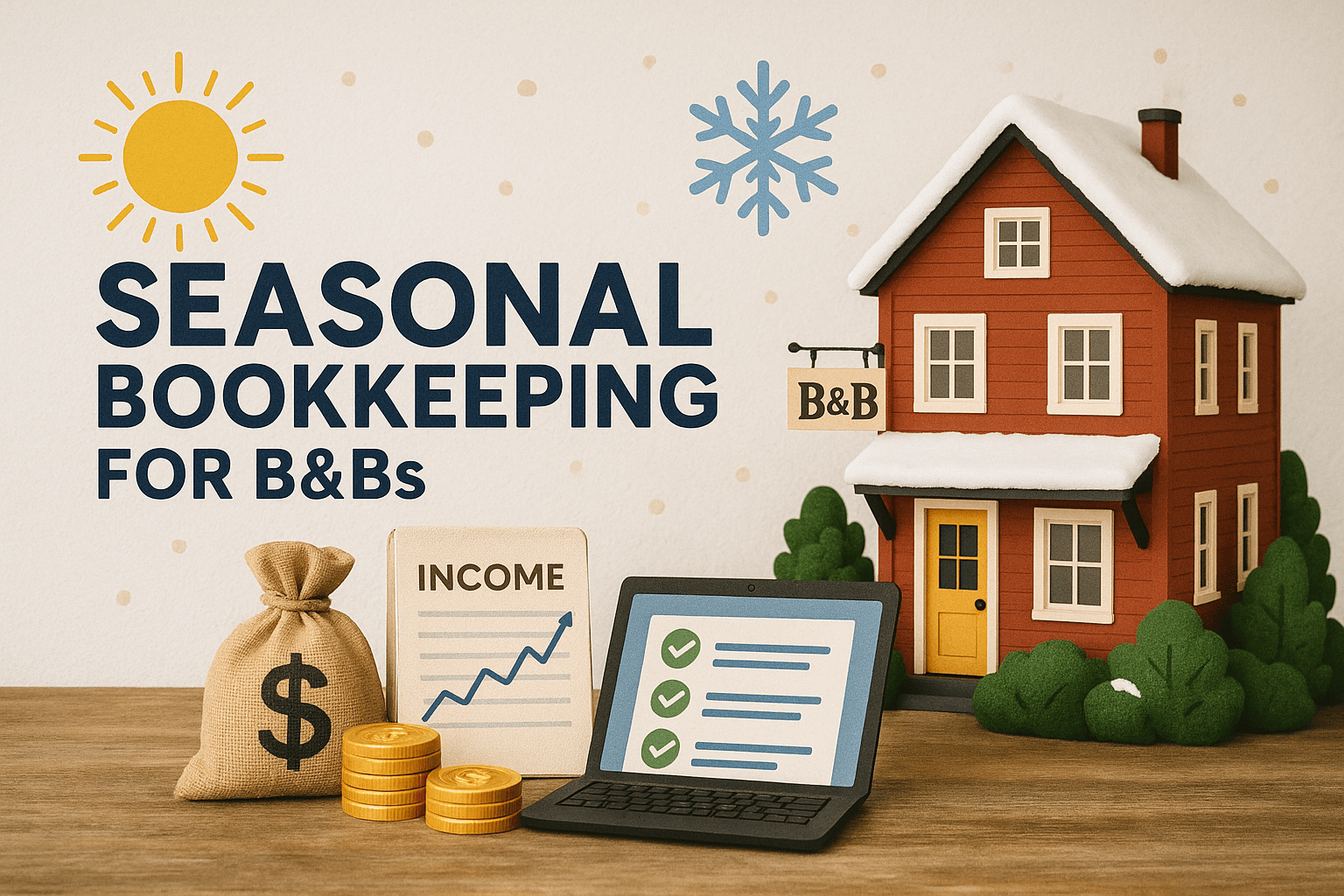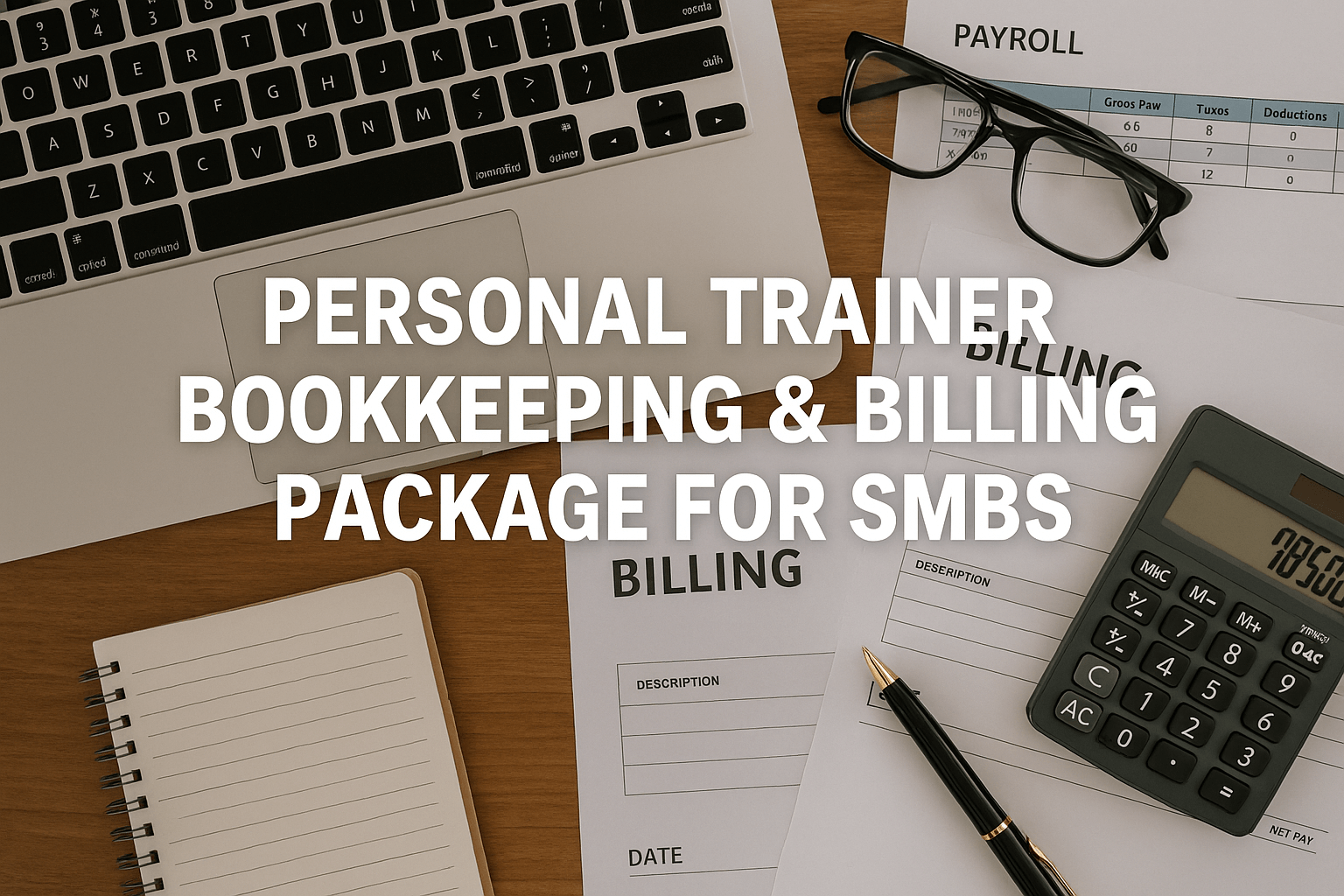Master Cloud-Based Bookkeeping for Your Pool Service Business
Cloud based bookkeeping for pool service businesses eliminates manual data entry, automates invoicing, and creates real-time visibility into your company’s financial health. When properly implemented, these digital tools integrate seamlessly with field service software like ServiceTitan or ProValet, enabling pool service companies to boost cash flow and drastically reduce administrative overhead.
Imagine finishing your last pool service appointment of the day and knowing your invoices have already been sent, payments are processing, and your financial dashboard shows exactly where your business stands. No more weekend paperwork, chasing payments, or wondering about your true profitability. This is the reality for pool service businesses that have mastered cloud-based bookkeeping.

What is cloud-based bookkeeping for pool service businesses and how does it work?
- Cloud-based bookkeeping for pool service businesses is a digital financial management system that automates invoicing, payment processing, and reporting while integrating with field service software.
- These systems eliminate manual data entry by capturing information directly from service technicians’ mobile devices, reducing errors and saving administrative time.
- Cloud platforms provide real-time visibility into business finances, allowing owners to make data-driven decisions about routing, pricing, and growth.
- Integration capabilities connect your service data with accounting software like QuickBooks, ensuring seamless financial tracking without duplicate entry.
- Security features protect sensitive customer and payment information while maintaining compliance with financial regulations.
Why Cloud-Based Bookkeeping Transforms Pool Service Finances
Cloud-based bookkeeping systems are specifically designed to address the unique challenges of pool service businesses. Unlike traditional bookkeeping that relies on manual processes, cloud solutions automate repetitive tasks and connect your field operations directly to your financial systems.
The transformation happens across several key areas:
- Automated invoicing with digital delivery means customers receive bills immediately after service completion
- Mobile payment collection allows technicians to process credit cards on-site
- Real-time financial reporting shows exactly which services, routes, or customers are most profitable
- Seamless data flow between field operations and accounting eliminates duplicate entry
- Centralized customer records maintain service history, communication logs, and payment status
A typical pool service business spends 15-20 hours weekly on administrative tasks. According to ServiceTitan’s 2024 Industry Report, companies that implement cloud-based bookkeeping reduce this administrative burden by at least 15 hours per week on average—time that can be redirected toward growing your business.
Essential Features To Look For In Cloud Bookkeeping Solutions
When evaluating cloud-based bookkeeping systems for your pool service business, certain features stand out as critical for operational success. These capabilities directly impact your cash flow, customer satisfaction, and overall profitability.
Mobile-first design
Your technicians need reliable tools that work poolside in bright sunlight and with wet hands. Look for systems offering:
- Water-resistant tablet compatibility
- Simple interfaces accessible with minimal training
- Offline functionality that syncs when connectivity returns
- Photo capture capabilities for before/after documentation
These mobile features ensure that service records feed directly into your bookkeeping system without requiring manual transfer of information.
Financial integration capabilities
The most effective cloud systems connect seamlessly with established accounting platforms like QuickBooks, creating a unified financial ecosystem.
Key integration points should include:
- Automatic syncing of invoices, payments, and expenses
- Chart of accounts mapping to maintain consistency
- Tax category assignments for service income and expenses
- Bank and credit card reconciliation features
“The average time to reconcile monthly finances for pool service businesses has decreased from 12.3 hours in 2018 to just 2.7 hours in 2025 with cloud-based systems,” according to the QuickBooks Pool Industry Report.
Customer management & payment processing
Effective cloud systems centralize customer information and streamline the payment process:
- Customer portals for viewing service history and making payments
- Automated payment reminders via text or email
- Recurring billing for maintenance contracts
- Multiple payment options (credit card, ACH, financing)
According to Method.me’s 2023 Pool Service Industry Survey, companies using integrated software solutions report collecting payments 71% faster than those using manual systems.
How To Choose The Right Cloud Bookkeeping Solution
Selecting the optimal cloud bookkeeping platform requires careful evaluation of your business requirements, integration needs, and growth plans. The decision significantly impacts your operational efficiency and financial visibility.
Assess your current workflows
Start by documenting your existing processes:
- How do you currently create and track invoices?
- What manual steps consume the most administrative time?
- Where do errors or delays typically occur?
- Which software tools are you already using and need to integrate?
This assessment helps identify pain points that the right cloud solution should address. Your goal is to eliminate duplicate work while improving accuracy and visibility.
Evaluate pool industry specialization
General bookkeeping solutions often miss pool-specific requirements. Look for platforms that understand:
- Chemical inventory tracking and restocking triggers
- Seasonal service transitions (openings/closings)
- Route density optimization
- Equipment warranty tracking
- Water testing documentation
Systems like ProValet and PoolTrac offer specialized features designed specifically for the pool service industry, while platforms like ServiceTitan and LOU provide broader field service capabilities with strong accounting integration.
Compare key feature sets
Create a comparison matrix of your top cloud bookkeeping candidates using these criteria:
| Feature | Importance | Candidate 1 | Candidate 2 | Candidate 3 |
| Mobile app usability | High | ⭐⭐⭐⭐⭐ | ⭐⭐⭐ | ⭐⭐⭐⭐ |
| QuickBooks integration | Essential | Yes | Limited | Yes |
| Chemical inventory tracking | Medium | No | Yes | Yes |
| Customer self-service portal | High | Basic | Advanced | Advanced |
| Route optimization | Medium | Yes | No | Yes |
| Subscription billing | High | Limited | Yes | Yes |
This structured comparison helps clarify which solution best matches your specific needs while highlighting potential trade-offs.

Implementation Strategies For Successful Transition
Transitioning to cloud-based bookkeeping requires careful planning and execution to minimize disruption while maximizing adoption. A phased approach typically delivers the best results.
Phase 1: Setup and configuration (Weeks 1-2)
The foundation of your implementation should include:
- Setting up your chart of accounts to match existing categories
- Configuring service items with appropriate pricing and tax treatments
- Building customer databases with service histories
- Creating user accounts with appropriate permission levels
- Establishing integration with your accounting software
During this phase, run parallel systems—keeping your current processes active while setting up the cloud solution—to ensure nothing falls through the cracks.
Phase 2: Team training (Weeks 2-3)
Effective training determines adoption success:
- Provide hands-on training for field technicians using actual devices
- Create simple reference guides for common tasks
- Establish super-users who can help troubleshoot issues
- Set clear expectations for when and how the system should be used
Remember that different team members have varying comfort levels with technology. Budget additional training time for those who need it, particularly with older technicians who may be resistant to change.
Phase 3: Pilot testing (Weeks 3-4)
Before full deployment:
- Select a small group of technicians or a specific service route for initial testing
- Run the cloud system alongside existing processes to compare results
- Document and resolve any issues that arise
- Collect feedback and make necessary adjustments
According to PoolMarketing.com’s 2024 Financial Analysis, businesses with systematic implementation approaches report 43% higher cash flow efficiency improvements than those who rush the transition.
Maximizing ROI From Your Cloud Bookkeeping Investment
The true value of cloud-based bookkeeping comes from leveraging its capabilities to drive business growth and profitability. Strategic usage transforms it from an expense into a revenue-generating asset.
Financial visibility driving business decisions
Cloud platforms provide real-time insights that inform critical business choices:
- Technician productivity metrics – Identify your most efficient team members and replicate their workflows
- Service profitability analysis – Determine which services deliver the highest margins and should be emphasized
- Customer value reporting – Recognize your most valuable clients for retention efforts
- Route density optimization – Restructure service routes to minimize drive time and maximize billable hours
According to Evosus Business Software’s 2024 survey, 67% of pool service companies cite “improved financial visibility” as the top benefit of cloud-based systems—above time savings or improved cash flow.
Automation opportunities beyond basic bookkeeping
Advanced cloud solutions offer automation capabilities that extend beyond simple invoice creation:
- Chemical usage tracking that automatically generates reorder notifications
- Maintenance schedule optimization based on pool conditions and history
- Warranty expiration alerts prompting upsell opportunities for equipment replacement
- Customer communication workflows triggered by service completion or payment status
Each automation reduces manual effort while enhancing customer experience and capturing revenue opportunities that might otherwise be missed.
Leveraging data For growth planning
The aggregated data in your cloud system becomes invaluable for strategic planning:
- Seasonal trend analysis helps anticipate staffing and inventory needs
- Geographic expansion planning identifies promising areas based on existing customer clusters
- Service offering expansion guided by customer request patterns
- Pricing optimization supported by profitability metrics across different service types
With efficient business finance management, this data-driven approach allows for more confident decision-making and reduces the risk associated with business expansion.
Addressing Common Cloud Bookkeeping Challenges
Even the best cloud solutions present implementation challenges. Understanding these potential hurdles and their solutions helps ensure a smoother transition.
Connectivity issues
Pool service happens outdoors where internet connectivity can be unreliable:
- Choose solutions with robust offline capabilities that sync when connection returns
- Establish clear protocols for technicians when service is completed in areas without signal
- Consider mobile hotspots for technicians servicing rural areas
- Test your chosen platform in various locations across your service area before full implementation
These preparations prevent the frustration of lost data or incomplete service records that require manual follow-up.
Integration limitations
Not all systems communicate perfectly with each other:
- Before committing to a platform, test the specific integration points you need most
- Be prepared for some manual reconciliation during initial setup
- Consider middleware solutions like Zapier for connecting systems without native integration
- Prioritize essential integrations (accounting software, payment processing) over “nice-to-have” connections
Understanding these limitations upfront prevents disappointment and allows for reasonable workarounds where needed.
Change management with your team
Technology adoption often faces human resistance:
- Involve key team members in the selection process to build buy-in
- Emphasize benefits specific to each role (technicians: less paperwork, office staff: fewer customer calls)
- Recognize and reward early adopters who embrace the new system
- Address concerns promptly and adjust training as needed
As the owner of a pool service business, your attitude toward the cloud transition sets the tone. Demonstrate your commitment by using the system yourself and highlighting its benefits in team meetings.
Security and Compliance in Cloud-Based Pool Service Bookkeeping
Security must be prioritized when managing financial data and customer information in cloud systems. Proper protection measures prevent data breaches while ensuring regulatory compliance.
Data protection essentials
Your cloud bookkeeping system should include these fundamental security features:
- End-to-end encryption for all data, both in transit and at rest
- Multi-factor authentication for all user accounts
- Role-based access controls limiting information access to appropriate personnel
- Regular security updates and patch management
- Automated backups with redundant storage
When evaluating providers, ask specifically about their security certifications and compliance with standards like Payment Card Industry Data Security Standard (PCI DSS) for handling credit card information.
Customer information protections
Pool service businesses collect sensitive customer data that requires protection:
- Physical addresses and access information
- Payment methods and history
- Property details including security systems
- Contact information and communication preferences
Your cloud platform should provide mechanisms to secure this information while still making it accessible to authorized personnel when needed for service delivery.
Regulatory compliance considerations
Pool service businesses must navigate various regulations:
- Tax reporting requirements for service-based businesses
- Sales tax collection and remittance regulations
- Industry-specific chemical handling documentation
- Labor law compliance for technician time tracking
Quality cloud bookkeeping systems help maintain compliance by automatically capturing and organizing the necessary documentation, reducing your risk of violations or audit issues.
Conclusion: Building Your Cloud-Based Financial Future
Cloud-based bookkeeping represents a fundamental shift in how pool service businesses manage their finances—from reactive paper-pushing to proactive financial management. The transition requires investment of time and resources, but delivers exceptional returns through improved cash flow, reduced administrative burden, and enhanced business intelligence.
With the right cloud solution, you’ll gain:
- Real-time visibility into your business performance
- Automated workflows that eliminate manual tasks
- Improved customer experience through faster, more accurate billing
- Strategic insights to guide growth decisions
- Scalability to support business expansion
The most successful pool service businesses recognize that business bookkeeping essentials have evolved beyond basic record-keeping to become strategic tools for business transformation. By implementing small business bookkeeping: 9 tips and tricks through cloud-based systems, you position your company for sustainable growth while reclaiming valuable time previously lost to administrative tasks.
Begin your journey toward financial clarity and operational excellence by exploring how cloud accounting can transform your pool service business. Your future self—free from weekend paperwork and enjoying improved profitability—will thank you.
Ready to transform your pool service business with professional cloud-based bookkeeping support? Visit Complete Controller today for a customized solution that integrates with your existing tools while delivering the financial clarity you need.

FAQs
What’s the best cloud bookkeeping software specifically for pool service businesses?
The “best” depends on your specific needs, but ProValet and ServiceTitan consistently lead for pool-specific features. ProValet excels with its mobile-first design and streamlined interface for smaller companies, while ServiceTitan offers more comprehensive features for larger operations. Both integrate with QuickBooks and provide real-time financial dashboards, automated invoicing, and mobile payment processing capabilities essential for pool service operations.
How much does cloud-based bookkeeping software cost for a pool service business?
Pool service cloud bookkeeping solutions typically range from $29-$150 per month, varying based on features and user count. Basic platforms like PoolTrac start around $29-$49 monthly for essential features, while comprehensive solutions like ServiceTitan may cost $100+ per user monthly. Consider the ROI rather than just the subscription cost—most pool businesses recover the investment through time savings, faster payments, and reduced billing errors within the first few months.
How difficult is it to transition from paper-based systems to cloud bookkeeping for my pool service company?
The transition typically takes 4-6 weeks, with difficulty depending on your current processes and team adaptability. The most successful implementations follow a phased approach: beginning with system setup and data migration, followed by focused team training, and concluding with a pilot period before full deployment. The key challenges aren’t technical but human—getting technicians comfortable with mobile apps and establishing new workflows requires patience and consistent follow-up.
Can cloud bookkeeping systems integrate with my existing pool service software?
Yes, most major cloud bookkeeping platforms offer integration with popular pool service management software. ServiceTitan, ProValet, and PoolTrac provide native connections to QuickBooks and other accounting systems. For custom or legacy pool software, middleware solutions like Zapier can create connections between systems without built-in integration. Before purchasing, verify specific integration capabilities with your potential provider and request a demonstration of the exact integrations you need.
How do cloud-based bookkeeping systems help with seasonal fluctuations in pool service businesses?
Cloud systems excel at managing seasonal businesses through flexible subscription billing, service scheduling, and financial forecasting tools. During peak seasons, these platforms automatically scale to handle increased transaction volume without performance issues. During slower periods, they help identify opportunities for alternative revenue streams by analyzing customer data. Most importantly, cloud systems provide accurate cash flow projections based on historical patterns, allowing you to prepare financially for seasonal downturns and staffing adjustments.
Sources
- Evosus Business Software. (2024). Pool Service Industry Survey. www.evosus.com
- Investopedia. (n.d.). QuickBooks Overview. https://www.investopedia.com/terms/q/quickbooks.asp
- Method.me. (2023). Pool Service Industry Survey. www.method.me
- PCI Security Standards Council. (n.d.). Payment Card Industry Data Security Standard (PCI DSS). https://www.pcisecuritystandards.org/pci_security/
- Pool & Spa News. (2025). Industry Analysis Report. www.poolspanews.com
- PoolCarePRO. (2025). Business Transformation Study: Sunshine Pool Maintenance Case Study. www.poolcarepro.com
- PoolMarketing.com. (2024). Financial Analysis Report. www.poolmarketing.com
- PoolTrac. (2023). Pool Management Software. https://pooltrac.com
- ProValet. (2023). Automated Invoicing and Payments. https://www.provalet.io
- QuickBooks. (2025). Pool Industry Report. www.quickbooks.com
- ServiceTitan. (2024). Case Study Repository: Blue Wave Pool Services Implementation. www.servicetitan.com
- ServiceTitan. (2024). Cloud-Based Pool Service CRM + Bookkeeping. https://www.servicetitan.com
- ServiceTitan. (2024). Industry Report. www.servicetitan.com
- Skimmer. (2024). Industry Report. www.skimmer.com
- Wikipedia. (n.d.). Cloud Accounting. https://en.wikipedia.org/wiki/Cloud_accounting
- Zuper. (2024). QuickBooks Integration for Pool Services. https://www.zuper.io
 About Complete Controller® – America’s Bookkeeping Experts Complete Controller is the Nation’s Leader in virtual bookkeeping, providing service to businesses and households alike. Utilizing Complete Controller’s technology, clients gain access to a cloud platform where their QuickBooks™️ file, critical financial documents, and back-office tools are hosted in an efficient SSO environment. Complete Controller’s team of certified US-based accounting professionals provide bookkeeping, record storage, performance reporting, and controller services including training, cash-flow management, budgeting and forecasting, process and controls advisement, and bill-pay. With flat-rate service plans, Complete Controller is the most cost-effective expert accounting solution for business, family-office, trusts, and households of any size or complexity.
About Complete Controller® – America’s Bookkeeping Experts Complete Controller is the Nation’s Leader in virtual bookkeeping, providing service to businesses and households alike. Utilizing Complete Controller’s technology, clients gain access to a cloud platform where their QuickBooks™️ file, critical financial documents, and back-office tools are hosted in an efficient SSO environment. Complete Controller’s team of certified US-based accounting professionals provide bookkeeping, record storage, performance reporting, and controller services including training, cash-flow management, budgeting and forecasting, process and controls advisement, and bill-pay. With flat-rate service plans, Complete Controller is the most cost-effective expert accounting solution for business, family-office, trusts, and households of any size or complexity.
 Reviewed By:
Reviewed By:













